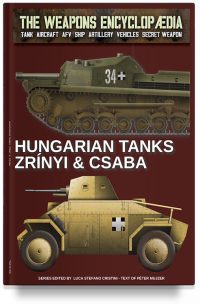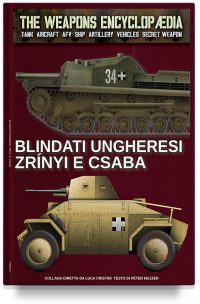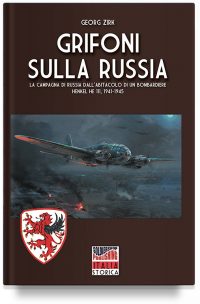-
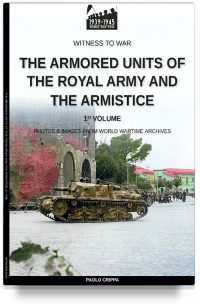
The armored units of the Royal Army and the Armistice
- €8,99
- The Armistice of 8 September 1943 caught the Italian armored units, both Tank units and Cavalry, scattered not only on the national territory, but also abroad. Similar to what had happened to all the Armed Forces, not even they were immune to the storm that had been unleashed and even from these units the reactions to Badoglio’s tragic announcement were the most disparate. Through an accurate analysis, in the pages of this book we will analyze how the armored units…
-
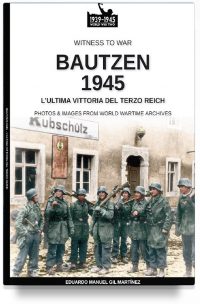
Bautzen 1945
- €8,99
- L’ultima chiara vittoria tedesca nella seconda guerra mondiale, avvenuta negli ultimi giorni dell’aprile 1945 durante la difesa, la perdita e il successivo recupero della città sassone di Bautzen. In quell'occasione, quando ormai tutto era andato perso, i resti di unità tedesche un tempo potenti, come le divisioni Hermann Göring, Brandeburg o Grossdeutschland, inflissero una sconfitta totale alle orgogliose unità sovietiche-polacche, assai più corpose ed armate, che sostenevano l’avanzata rossa verso la capitale del Reich. Questo testo narra le vicende accadute in quella…
-
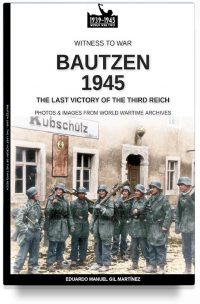
Bautzen 1945 (English)
- €8,99
- The last clear German victory in World War II occurred in the last days of April 1945 during the defense, loss and subsequent recovery of the Saxon city of Bautzen. On that occasion, when all was lost, the remnants of once powerful German units, such as the Panzer Divions Hermann Göring, Brandeburg or Grossdeutschland, inflicted a total defeat on the proud Soviet-Polish units, more robust and better armed, that supported the Red Army advance towards the capital of the Reich. This…
-
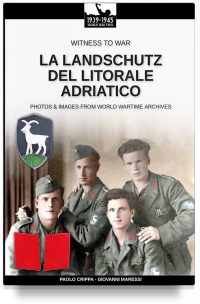
La Landschutz del Litorale Adriatico
- €8,99
- Dopo l'Armistizio e la conseguente occupazione tedesca delle regioni giuliane, di fatto annesse al Reich tedesco con la creazione della Zona di Operazioni del Litorale Adriatico, le autorità militari germaniche decretarono la costituzione di reparti di autodifesa territoriale, formati da cittadini italiani, sloveni e croati, da affiancare alle unità tedesche nella lotta al fenomeno partigiano. Si organizzò così la Landschutz, un corpo a base etnica, che doveva "contribuire al mantenimento dell'ordine e della sicurezza", che fu formalmente costituita dal Supremo…
-
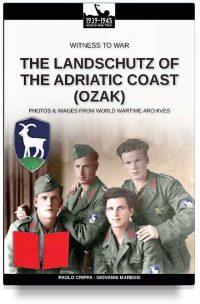
The Landschutz of the Adriatic Coast (OZAK)
- €8,99
- After the Armistice and the consequent German occupation of the Julian regions, which were in fact annexed to the German Reich with the creation of the Zone of Operations of the Adriatic Coast, the German military authorities decreed the establishment of territorial self-defense units, formed by Italian, Slovenian and Croatian citizens, to flank the German units in the fight against the partisan phenomenon. The Landschutz was thus organized, an ethnically based corps, which had to "contribute to the maintenance of…
-
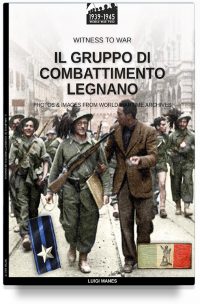
Il gruppo di combattimento Legnano
- €8,99
- La divisione di fanteria “Legnano” può essere giustamente considerata come il nucleo originario dell’esercito italiano cobelligerante poiché fu incaricata di costituire il “Primo Raggruppamento Motorizzato”, reparto che ricevette il battesimo del fuoco a Montelungo l’8 dicembre 1943. Cinque mesi dopo il piccolo contingente fu ampliato grazie all’afflusso di altre unità e mutò la propria denominazione in “Corpo Italiano di Liberazione”. Nel settembre 1944 furono creati sei Gruppi di Combattimento equipaggiati con armamenti e materiali forniti dagli Alleati. Il 23 marzo…
-
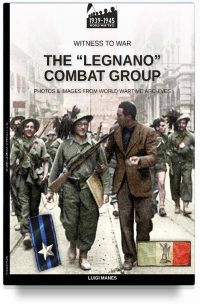
The “Legnano” Combat Group
- €8,99
- The “Legnano” Infantry Division is considered as the first nucleus of the co-belligerent Italian Army since it was charged with constituting the “First Motorized Group” which made its combat debut at Montelungo on 8 December 1943. Five months later, this small formation was expanded, becoming the “Italian Liberation Corps”. Beginning in September 1944 six Italian Combat Groups, equipped with Allied weapons and materiel, were established. The “Legnano” Combat Group, heir of the “Legnano” Division, was given the responsibility of the Idice Valley…
-
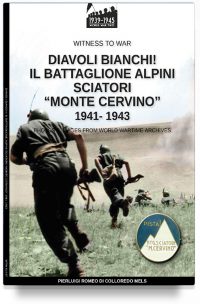
Diavoli bianchi! Il battaglione Alpini Sciatori “Monte Cervino” 1941-1943
- €8,99
- Il battaglione Alpini Sciatori Monte Cervino costituisce sicuramente un’eccezione nel non esaltante quadro delle Forze Armate italiane nella Seconda Guerra Mondiale.Formato da personale di altissima specializzazione- maestri di sci e guide alpine- provenienti dalla Scuola Alpina di Aosta il battaglione ricevette un equipaggiamento decisamente superiore a quello degli altri militari italiani: dalle tute mimetiche agli scarponi con la suola in gomma isolante vibram sino al numero di fucili mitragliatori MAB 38 distribuiti in misura senza paragoni rispetto agli altri reparti. Soprannominati…
-
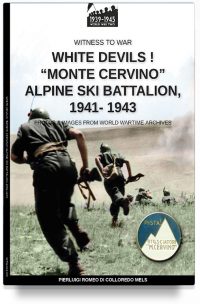
White devils! “Monte Cervino” Alpine Ski Battalion 1941-1943
- €8,99
- The Monte Cervino Ski Battalion was certainly an exception in the poorly equipped Italian Armed Forces in the Second World War. Made up of highly specialized personnel - ski instructors and alpine guides - coming from the Alpine School of Aosta, the battalion received equipment that was decidedly superior to that of the average Italian soldiers: from camouflage suits to boots with vibram insulating rubber soles up to the number of MAB 38 submachine guns distributed in an unparalleled extent…
-
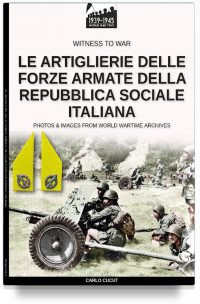
Le artiglierie delle Forze Armate della Repubblica Sociale Italiana
- €8,99
- Il presente studio intende colmare, o almeno cercare di colmare parzialmente, una lacuna relativa alla dotazione di artiglieria presente nei Reparti delle Forze Armate della Repubblica Sociale Italiana. Si tratta di un argomento di difficile valutazione poichè, ad eccezione delle quattro divisioni addestrate in Germania ed equipaggiate sulla base di tabelle di armamento ben definite, tutti i reparti che hanno combattuto sotto la bandiera della R.S.I. non avevano un ordine di battaglia definito da tabelle di armamento, ma erano piuttosto…
-
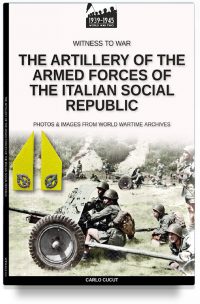
The artillery of the Armed Forces of the Italian Social Republic
- €8,99
- The present study intends to fill, or at least try to partially fill, a gap in the artillery equipment present in the Departments of the Armed Forces of the Italian Social Republic. This is a difficult subject to evaluate since, with the exception of the four Divisions trained in Germany and equipped on the basis of well-defined armament tables, all the Departments that fought under the flag of RSI, did not have a battle order defined by tables. of armament,…
-
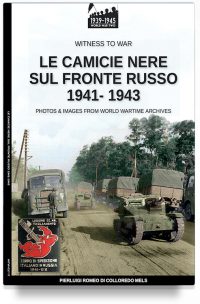
Le camicie nere sul fronte russo 1941-1943
- €8,99
- Le Camicie Nere vennero inviate sul Fronte Orientale per costituire la punta di lancia ideologica della lotta tra il fascismo ed il comunismo sovietico: riassunta da Mussolini con lo slogan: O Roma o Mosca. Dopo i buoni risultati ottenuti nel 1941 dalla 63a Legione Tagliamento, altre unità vennero inviate in Russia nel corso del 1942 venendo a costituire i Raggruppamenti 3 Gennaio e 23 Marzo, che erano in pratica due brigate che, insieme alla Legione Croata della MVSN, si distinsero nel…
-
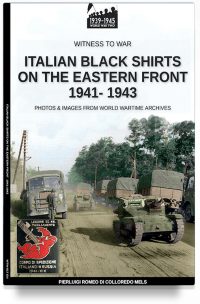
Italian black shirts on the Eastern front 1941-1943
- €8,99
- The Black Shirts were sent to the Eastern Front to constitute the ideological spearhead of the struggle between fascism and Soviet communism: summed up by Mussolini with the slogan: Or Rome or Moscow. After the good results obtained in 1941 by the 63rd Tagliamento Legion, other units were sent to Russia in the course of 1942 coming to form the Groupings 3 Gennaio and 23 Marzo, which were practically two brigades that, together with the Croatian Legion of MVSN, distinguished…
-

Dalla Sicilia al Senio
- €8,99
- La straordinaria storia del tenente Giorgio De Sanctis Giorgio De Sanctis, classe 1921, Tenente del Genio Guastatori, fronte della Sicilia, Guerra di Liberazione come comandante dell'870° Nucleo Speciale Guastatori Genio, dapprima con al V Armata Americana e poi con il Gruppo di Combattimento "Friuli", ma soprattutto il più giovane decorato di Medaglia d'Oro al Valor Militare italiano. Per molti l'870° Nucleo Speciale Guastatori Genio è solamente un nome, o poco più, all'interno degli annali della Storia Militare italiana. Lo era…
-
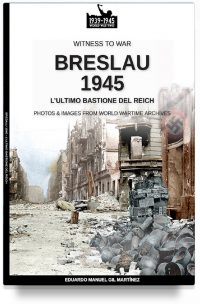
Breslau 1945: l’ultimo bastione del Reich
- €8,99
- Nel 1944 Adolf Hitler ordinò la creazione di una linea difensiva basata su città fortezza (Festung) in grado di fermare il nemico e di servire come base poi per una controffensiva che ben pochi vedevano come fattibile. Breslau, nella Bassa Slesia, fu una delle città prescelte. Per la sua fortificazione furono costruiti anelli difensivi e bunker, l’artiglieria fu rinforzata e la popolazione civile militarizzata. Al momento dell’attacco sovietico la città venne subito circondata. Dal 13 Febbraio 1945 al 6 maggio…
-
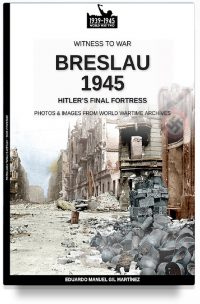
Breslau 1945: Hitler’s final fortress
- €8,99
- In 1944 Adolf Hitler ordered the creation of a defensive line based on fortress cities (festung) capable of stopping the enemy and then serving as a base for a counter-offensive that few saw as possible. Breslau, in Lower Silesia, was one of the chosen cities. For its fortification defensive rings and bunkers were built, artillery was reinforced and the civilian population was militarized. At the time of the Soviet attack the city was immediately surrounded. From February 13th, 1945 to…
-
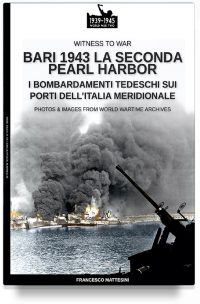
Bari 1943: la seconda Pearl Harbor
- €8,99
- Il bombardamento notturno di Bari del 2 dicembre 1943 fu un’azione spettacolare effettuata a bassa quota da velivoli della Luftwaffe, con lo scopo di attaccare le navi da trasporto di un importante convoglio che si trovava nel porto sotto scarico nei moli, e che era stato segnalato al mattino dalla ricognizione aerea tedesca. Bari era stata raggiunta dalle truppe britanniche l’11 settembre in seguito agli avvenimenti della resa dell’Italia, e gran parte dei rifornimenti che vi affluivano erano destinati all’8°…
-
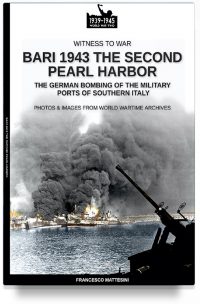
Bari 1943: the second Pearl Harbor
- €8,99
- The night bombardment of Bari on December 2nd, 1943 was a dramatic action carried out at low altitude by Luftwaffe aircraft, with the aim of attacking the transport ships of an important convoy that was in the port under unloading in the docks, and that had been reported in the morning by the German air reconnaissance. Bari had been reached by British troops on September 11th following the events of Italy’s surrender, and most of the supplies that flowed there…
-
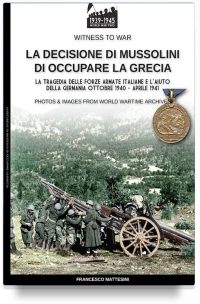
La decisione di Mussolini di occupare la Grecia
- €8,99
- Alla fine del 1940 i fronti militari italiani, di terra, di cielo e di mare, attraversavano un periodo di grande crisi, perché il nemico, allora rappresentato dall’Impero britannico e dalla Grecia, era ovunque all’offensiva, ed aveva inflitto al membro meridionale dell’Asse europeo una serie impressionante di sconfitte. In tale situazione il Capo del Governo italiano, Benito Mussolini, temendo di dover chiedere perfino un armistizio alla Grecia che aveva aggredito, era stato costretto ad invocare, fin dall’inizio di novembre del 1940,…
-
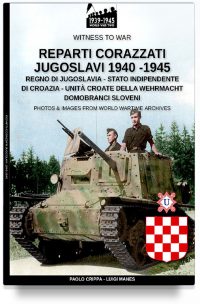
Reparti corazzati Jugoslavi 1940-1945
- €8,99
- Questo volume racconta la storia quasi sconosciuta dei carristi Jugoslavi dalla formazione al secondo conflitto mondiale. La formazione delle prime unità corazzate dell’Esercito del Regno di Jugoslavia risale alla fine degli anni ’20, quando le autorità militari sentirono la necessità di dotare i reparti di una componente blindata, sulla scorta delle esperienze vissute durante la Grande Guerra dagli eserciti impegnati nella guerra di trincea. Contrariamente a quello che succedeva presso molti altri eserciti europei a quell’epoca, queste unità corazzate non si…
-
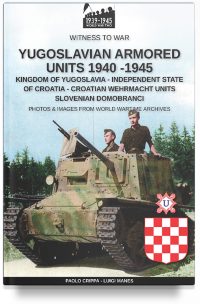
Yugoslavian armored units 1940-1945
- €8,99
- This volume tells the almost unknown story of Yugoslav tankers from training to the Second World War. The formation of the first armored units of the Army of the Kingdom of Yugoslavia dates back to the late 1920s, when military authorities felt the need to equip the units with an armored component, on the basis of the experiences lived during the Great War by the armies engaged in trench warfare. Contrary to what happened with many other European armies at that…
-
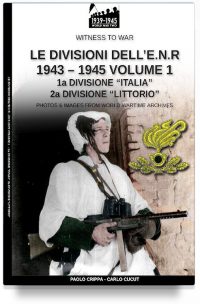
Le divisioni dell’E.N.R. 1943-1945 – Vol. 1
- €8,99
- L'obiettivo che ci siamo prefissi con questa serie di due volumi , scritti a quattro mani, è di dare un quadro complessivo delle quattro Divisioni formate dall'Esercito della R.S.I. a partire dagli ultimi mesi del 1943, offrendo un punto di vista puramente storico e militare, senza fornire giudizi di alcun tipo. Nel corso di colloqui intercorsi tra Mussolini ed Hitler dopo la costituzione della Repubblica Sociale fu concordato di dare vita ad un nuovo esercito costituito da 10/15 Divisioni di…
-
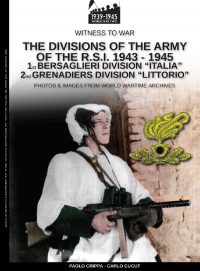
The divisions of the army of the R.S.I. 1943-1945 – Vol. 1
- €8,99
- The goal we have set ourselves with this series of four volumes, written in four hands, is to give an overall picture of the Divisions formed by the Army of the R.S.I. to the departments used in the fight against the partisans by the Republican National Army, starting from the last months of 1943, offering a purely military point of view, free from judgments of any kind. The purpose of "continuing the war" had always been present since the beginning…
-
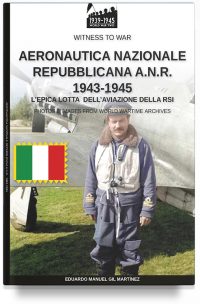
Aeronautica Nazionale Repubblicana A.N.R. 1943-1945
- €8,99
- In questo libro l’autore descrive al meglio l’organizzazione e la storia dell’Aeronautica Militare Italiana che dopo l’armistizio nel 1943 rimase sotto il comando di Benito Mussolini e alleato della Germania: l’Aeronautica Nazionale Repubblicana (ANR). Lo studio parte dal suo fondatore il tenente colonnello Ernesto Botto, con il ritorno di oltre 1.000 aerei italiani sequestrati dalla Luftwaffe dopo l’armistizio cui si aggiunsero poi molti aerei tedeschi come i Bf109. Gruppi di caccia, gruppi di bombardieri, trasporti, ecc. Capitoli tutti descritti in…
-

Le Waffen SS germaniche sul fronte italiano
- €8,99
- La campagna d’Italia, durante la Seconda guerra mondiale, vide diverse formazioni combattenti dell’esercito tedesco, dalla Wehrmacht alla Luftwaffe, tra queste vi furono anche reparti delle Waffen SS o SS combattenti che affiancavano reparti della SS Polizei e dei servizi dell’intelligence germanica. Nell’estate del 1943 le Waffen SS in Italia erano presenti solo con la Sturmbrigade “Reichsführer”, dislocata a presidio della Corsica. La “Reichsführer” sarà l’unica unità delle Waffen SS a combattere in Italia fino a quando, all’inizio del 1944, sarà…
